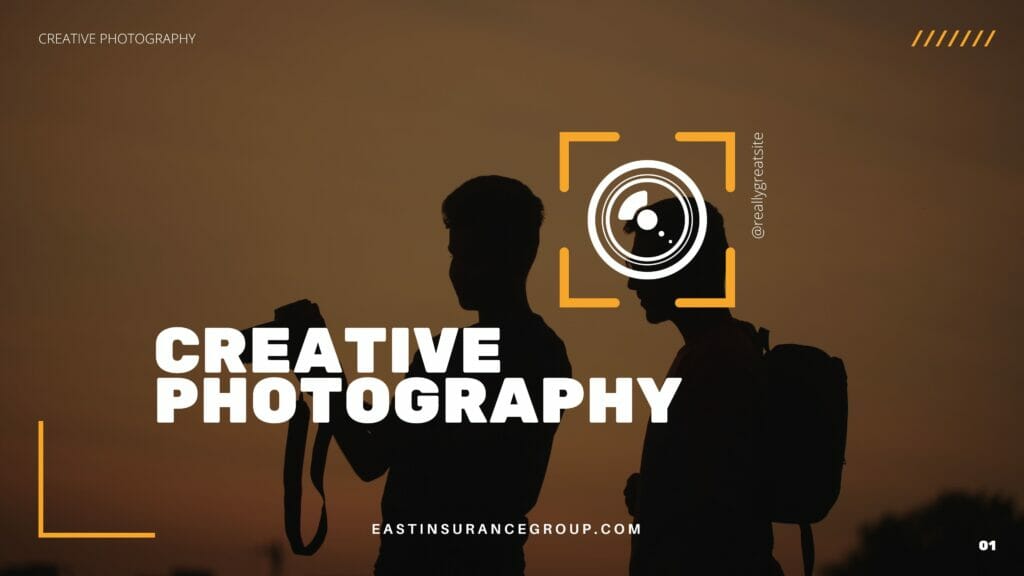In the world of photography, where creativity meets professionalism, the role of insurance cannot be underestimated. Photography isn’t just about capturing moments and telling stories; it’s also a thriving business that demands financial security and risk management. Whether you’re a budding photographer or an established professional, understanding the importance of insurance in the realm of photography is essential for your long-term success.
Context of the Photography Insurance
The Emergence of Photography Insurance
The history of insurance in photography is closely tied to the evolution of the photography industry. In the early days of photography, when the art form was still in its infancy, insurance specifically designed for photographers didn’t exist. However, as photography gained popularity and photographers began to use expensive and delicate equipment, the need for insurance became apparent.
Late 19th Century
By the late 19th century, as photography technology advanced, and professionals invested in more expensive cameras and studio equipment, the first forms of insurance coverage for photographers started to emerge. Initially, this coverage focused on protecting expensive photographic equipment, which was often highly susceptible to damage due to the fragile and cumbersome nature of early photography apparatus.
20th Century Developments
As photography technology continued to evolve through the 20th century, so did the insurance offerings for photographers. Insurance companies began to understand the unique risks and challenges faced by photographers, both in terms of equipment protection and liability coverage.
Types of Photography Insurance
Equipment Insurance: This form of insurance covers the loss, damage, or theft of photography equipment, including cameras, lenses, lighting, and accessories. It ensures that photographers can quickly replace their gear in case of unforeseen incidents.
Liability Insurance: As photography expanded into event coverage, commercial photography, and portrait sessions, liability insurance became crucial. It protects photographers from potential legal claims or lawsuits in case of accidents, property damage, or injuries occurring during a photography session.
Professional Indemnity Insurance: This type of insurance is designed to protect photographers from claims arising out of professional mistakes, misunderstandings, or disputes with clients. It provides coverage for legal expenses and damages.
Business Interruption Insurance: This insurance helps photographers maintain a steady income in situations where they are unable to work due to unforeseen circumstances like studio damage from natural disasters, fires, or other disruptions.
Photography Industry Regulations
In some cases, regulations and licensing requirements have also driven the need for insurance within the photography industry. For instance, photographers covering events like weddings or working in commercial settings may be required by venues or clients to carry liability insurance as a condition of doing business.
Modern Photography Insurance
In the modern era, photography insurance has become more specialized and customizable. Photographers can choose from a range of insurance options to fit their specific needs. Online platforms and insurance providers now offer tailored policies that combine equipment, liability, and other coverage to provide comprehensive protection for photographers of all specialties.
Key Types of Photography Insurance Coverage

Professional Liability Insurance (Errors and Omissions Insurance): This type of insurance covers photographers in case of professional negligence, mistakes, or errors that result in financial loss or harm to a client. For example, if a wedding photographer accidentally deletes all the wedding photos, professional liability insurance can help cover legal costs and potential settlements.
General Liability Insurance: General liability insurance provides coverage for third-party bodily injury and property damage claims that may occur during a photography session or at your studio. It can also cover slip-and-fall accidents or damage to a client’s property during a shoot.
Equipment Insurance (Photographer’s Insurance): Equipment insurance, also known as photographer’s insurance, covers damage, theft, or loss of your camera gear, lighting equipment, and accessories. It can help replace or repair your equipment so you can continue your photography business.
Business Owner’s Policy (BOP): A BOP combines general liability insurance and property insurance into a single package. It’s suitable for small photography businesses and can provide coverage for both liability claims and damage to your studio or office space.
Commercial Auto Insurance: If you use a vehicle for your photography business, commercial auto insurance is necessary. It covers accidents and damage to your vehicle while on business-related trips.
Workers’ Compensation Insurance: If you have employees or hire assistants, workers’ compensation insurance is required in many jurisdictions. It provides coverage for medical expenses and lost wages if an employee is injured on the job.
Inland Marine Insurance: Inland marine insurance covers your equipment when it’s being transported or used off-site. It’s especially useful for photographers who frequently travel to different locations for shoots.
Data Breach and Cyber Liability Insurance: In today’s digital age, photographers often store client information and images electronically. Data breach and cyber liability insurance can protect your business in case of data breaches, cyberattacks, or data loss
Event Insurance: If you photograph events like weddings or parties, event insurance can be beneficial. It covers unforeseen circumstances like cancellations due to extreme weather or venue damage, ensuring you’re compensated for lost income.
Health Insurance: While not directly related to photography, health insurance is crucial for photographers who are self-employed or run their own businesses. It helps cover medical expenses and provides peace of mind.
The specific insurance needs of photographers can vary based on the type of photography they do, the size of their business, and their location. It’s advisable to consult with a professional insurance agent who specializes in photography to assess your specific needs and tailor a policy that provides adequate coverage for your photography business.
The Importance of Photography Insurance
In the world of professional photography, ensuring the success and longevity of your business involves more than just capturing beautiful images and mastering the art of storytelling. It also means being prepared for unforeseen circumstances, accidents, or equipment damage that could potentially disrupt your business operations. This is where insurance comes into play, and it’s a critical aspect of running a photography business that should not be overlooked.
Protecting Your Gear and Investment Photography Insurance
Photographers often invest significant amounts of money in high-quality camera equipment, lenses, lighting gear, and accessories. These tools are not just essential for producing stunning images but also represent a substantial financial investment. Any damage, theft, or loss of this equipment can be financially devastating, potentially halting your photography business entirely. This is where equipment insurance, such as camera insurance or a business property insurance policy, becomes indispensable. It ensures that you can recover from unexpected losses and continue operating your business without a major setback.
Liability Insurance for Client Safety
When working with clients for events, portrait sessions, or commercial projects, there’s always the potential for accidents or unforeseen incidents to occur. In such cases, liability insurance is your safeguard. Whether it’s a client tripping over a piece of equipment during a photo shoot or a guest at a wedding accidentally damaging their own property while interacting with your photography setup, liability insurance can protect you from costly legal claims and settlements. It gives you peace of mind and reassures your clients that you’re a responsible and professional photographer.
Professional Indemnity Insurance
Mistakes or misunderstandings can sometimes lead to dissatisfaction on the part of clients. They may expect a specific outcome from a project that you can’t entirely fulfill. Professional indemnity insurance, also known as errors and omissions insurance, protects you from claims arising out of professional mistakes or disputes with clients. It covers legal expenses and damages, helping you maintain a positive reputation and professional integrity.
Ensuring Business Continuity
Imagine a scenario where your photography studio, filled with valuable props, backdrops, and equipment, suffers damage due to a fire, flood, or natural disaster. Such events can be catastrophic, but with the right insurance coverage, you can rebuild your studio and replace your equipment. Business interruption insurance can also provide financial support during periods when you can’t work due to unforeseen circumstances, ensuring that your income remains steady.
In conclusion, while photography is a creative and artistic endeavor, the business aspect of it should not be underestimated. By incorporating insurance into your business strategy, you not only protect your investments and assets but also demonstrate your commitment to professionalism and reliability. Insurance provides the security and peace of mind that allows you to focus on what you do best – capturing those precious moments and stories through your lens. So, as you embark on your journey to establish a creative photography business, remember that a solid insurance plan is just as crucial as your camera and lenses.
FAQs
Why do photographers need photography insurance?
Photographers need insurance to protect their equipment, assets, and business from unforeseen incidents like theft, damage, or liability claims. It provides financial security and ensures business continuity.
What is camera equipment insurance for photographers?
Camera equipment insurance is a specialized type of coverage that protects a photographer’s camera gear, lenses, lighting equipment, and accessories from loss, damage, or theft
.
Why is liability insurance essential for photographers?
Liability insurance is crucial for photographers to protect themselves from potential legal claims, accidents, or property damage during photography sessions, ensuring they’re covered in case of unforeseen incidents.
What is professional indemnity insurance for photographers?
Professional indemnity insurance, also known as errors and omissions insurance, safeguards photographers from claims resulting from professional mistakes, misunderstandings, or disputes with clients. It covers legal expenses and potential damages.
How does business interruption insurance benefit photographers?
Business interruption insurance provides financial support when photographers are unable to work due to unexpected events like studio damage from natural disasters. It helps maintain a steady income during disruptions.
What types of photography insurance are available for professionals?
There are several types of insurance available for photographers, including equipment insurance, liability insurance, professional indemnity insurance, business interruption insurance, and more. Coverage can be customized to meet specific needs.
Do I need photography insurance if I’m just a hobbyist photographer?
While hobbyist photographers may not require the same level of coverage as professionals, insurance can still be beneficial to protect valuable camera equipment. It’s a personal decision based on the value of your gear and your risk tolerance.
Is insurance expensive for photographers?
The cost of insurance for photographers varies based on factors such as coverage limits, the type of photography you do, and your location. While it represents an additional expense, the protection it provides is often well worth the cost.
What should I consider when selecting insurance for my photography business?
When choosing insurance, consider factors such as the value of your equipment, the type of photography you specialize in, your exposure to liability, and your location. It’s important to tailor your insurance to your specific needs.
How can I find the right provider for photography insurance coverage?
You can find the right insurance provider by researching options, comparing policies, seeking recommendations from fellow photographers, and working with an insurance agent who specializes in photography coverage. Customized policies are often the best choice to meet your specific needs.
These FAQs address common questions that photographers may have regarding insurance and its significance in the photography business. Remember that insurance can provide financial security and peace of mind, allowing photographers to focus on their art and their clients.

